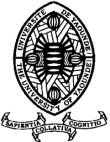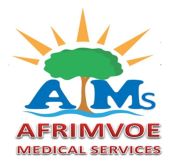Clinical Presentation, Paraclinical Findings and Outcome of Intracranial Vascular Malformations in Libreville
Aspects Cliniques, Paracliniques et Évolutifs des Malformations Vasculaires Intracrâniennes à Libreville
DOI:
https://doi.org/10.5281/hra.v2i6.5731Keywords:
vascular malformations, epidemiological aspects, LibrevilleAbstract
RESUME
Introduction. L’importante hétérogénéité des malformations vasculaires intracrâniennes (MAVc) rend l’étude de cette pathologie difficile et les données épidémiologiques rares en Afrique. L’objectif de notre étude était de décrire les aspects épidémiologiques, cliniques, paracliniques et évolutifs des malformations vasculaires intracrâniennes à Libreville en 2022. Méthodologie. Il s’agissait d’une étude rétro-prospective à visée descriptive et analytique qui s’est déroulée du 1er janvier 2017 au 31 décembre 2022 dans les services de neurologie du CHU de Libreville et de neurochirurgie du CHU d’Owendo et de l’HIAOBO portant sur tous les dossiers des patients âgés d’au moins 18 ans et hospitalisés dans les structures suscitées pour une malformation vasculaire intracrânienne confirmée à l’imagerie cérébrale durant la période d’étude. Résultats. Nous avons enregistré 45 patients présentant des malformations vasculaires soit une prévalence hospitalière de 0,85% avec une prédominance des anévrysmes intracrâniens (55,6%) suivis des malformations artérioveineuses cérébrales (33,3%). Les principaux signes cliniques comportaient les céphalées (51,1%), le déficit moteur (46,7%), les troubles de la conscience (42,2%) et les crises d’épilepsie (33,3%). Le mode de présentation majeur était l’hémorragie intracrânienne (91,1%). La mortalité intrahospitalière était de 26,7%. Le traitement était chirurgical chez certains porteurs d’anévrysmes (58,3%), des patients de MAVc (45,5%) et deux cas de cavernomes. Les probabilités de survie étaient de 72,4% à deux ans et 68,9% à cinq ans. Conclusion. Les malformations vasculaires intracrâniennes sont rares et probablement sous-diagnostiquées dans notre contexte. L’hémorragie intracrânienne en fait la gravité et constitue la principale source de mortalité.
ABSTRACT
Introduction. The significant heterogeneity of intracranial vascular malformations (IVMs) makes the study of this pathology difficult and epidemiological data are rare in Africa. The aim of our study was to investigate the epidemiological, clinical, paraclinical, and evolutionary aspects of intracranial vascular malformations in Libreville in 2022. Methodology. This was a retro-prospective descriptive and analytical study that took place from January 1, 2017, to December 31, 2022, in the neurology department of the CHU de Libreville and the neurosurgery departments of the CHU d'Owendo and the HIAOBO, involving all patient records aged at least 18 years and hospitalized in the aforementioned facilities for confirmed intracranial vascular malformations on brain imaging during the study period. Results. We recorded 45 patients with vascular malformations, representing a hospital prevalence of 0.85%, with a predominance of intracranial aneurysms (55.6%) followed by cerebral arteriovenous malformations (33.3%). The main clinical signs included headaches (51.1%), motor deficits (46.7%), consciousness disorders (42.2%), and epilepsy seizures (33.3%). The major presentation mode was intracranial hemorrhage (91.1%). In-hospital mortality was 26.7%. Treatment was surgical for some aneurysm patients (58.3%), IVM patients (45.5%), and two cases of cavernomas. Survival probabilities were 72.4% at two years and 68.9% at five years. Conclusion. Intracranial vascular malformations are rare and probably underdiagnosed in our context. Intracranial hemorrhage indicates severity and is the main source of mortality.
References
Stapf C. Céphalées et malformations vasculaires intracrâniennes non rompues. La lettre du neurologue 2005 ; 9 (7) : 12-15.
Sabayan B, Lineback C, Viswanathan A, Mazwi TM, Shaibani A. Central nervous system vascular malformations : A clinical review. Annals of Clinical and Translational Neurology 2021 ; 8(2) : 504-522.
Spelle L, Mounayer C, Piotin M, Moret J. Malformations artérioveineuses intracrâniennes : Données épidémiologiques et génétiques. J Neuroradiol 2004 ; 31 : 362-364.
Stapf C. Histoire naturelle des malformations artérioveineuses cérébrales. La lettre du neurologue 2005 ; 9 (10) : 359-362.
Josephson CB, Rosenow F, Al-Shahi Salman R. Intracranial Vascular Malformations and Epilepsy. Semin Neurol 2015 ; 35 :223-224.
Rodriguez Regent C, Edjlali Goujon M, Trystram D, et al. Diagnostic non invasif des anévrismes intracrâniens. Journal de Radiologie Diagnostique et Interventionnelle 2014 ; 95 : 1148-1160.
Ming-Hua, et al. Prevalence of Unruptured Cerebral Aneurysms in Chinese Adults aged 35 to 75 years. A cross- sectional study. Ann Intern Med 2013 ; 159 :514-521.
Thines L. Anévrismes artériels intracrâniens. Neurochirurgie 2015 ; 61(6) : 371-377.
Lubicz B. Les anévrismes et autres malformations vasculaires intracrâniennes. Rev Med Brux 2012 ; 33 : 377-381.
Mooney MA, Zabramski JM. Developmental venous anomalies. Handbook of Clinical Neurology 2017 ; 143 (3) : 279-282.
Barreau X, Margnat G, Gabriel F, Dousset V. Malformations artério-veineuses intracrâniennes. Journal de Radiologie Diagnostique et Interventionnelle 2014 ; 513 : 1-14.
Laakso A, Hernesniemi J. Arteriovenous Malformations : Epidemiology and Clinical Presentation 2012 ; Neurosurg Clin N Am 23 : 1-6.
Bencherif L, Tikanouine A, Jaffer M, Abdennebi B. Etude épidémiologique comparative des malformations vasculaires anévrysmales et artério-veineuses sur une période de 10 ans. Journal de Neurochirurgie 2007 ; 6 : 11-15.
Codjia AV, Guinhouya KM, Apetse K et al. Problématiques diagnostiques et thérapeutiques des hémorragies sous arachnoïdiennes dans les pays à ressources limitées : cas du Togo. Revue neurologique 2019 ; 175 (1) : 65-66.
Gamby A. Prise en charge anesthésiologique de l’anévrisme cérébral à l’hôpital du Mali [Mémoire de Médecine]. Bamako : Faculté de Médecine et d’Odonto-stomatologie ; 2021. 35p.
Mouklachi M, Lmejjati M, Ait-Benali S. La prise en charge de l’anévrysme artériel intracrânien, expérience du service de neurochirurgie du CHU Mohamed VI [Thèse de Médecine en ligne]. Marrakech : Faculté de Médecine et de Pharmacie ; 2014. Disponible : http://wd.fmpm.uca.ma/biblio/theses/annee-htm/art/2014/article12-14.pdf
Choi JH, Spellman JP, Brisman J. Trends in the Management of Intracranial Vascular Malformations in the USA from 2000 to 2007. Stroke Research and Treatment 2012 ; 1-11.
Zouzou AE, Touré A, N’dja AP, et al. Exploration tomodensitométrique des anévrismes intracrâniens à Abidjan : A propos de 149 cas. Jaccr Africa 2021 ; 5(2) : 70-78.
Imaizumi Y, Mizutani T, Shimizu K et al. Detection rates and sites of unruptured intracranial aneurysms according to sex and age: an analysis of MR angiography-based brain examinations of 4070 healthy Japanese adults. J Neurosurg 2018 ; 1 : 1-6.
Lai HP, Cheng KM, Yu SC et al. Size, location and multiplicity of ruptured intracranial aneurysms in the Hong Kong Chinese population with subarachnoid haemorrhage. Hong Kong Med J 2009 ; 15 : 262-266.
Diouf A. Profil des anévrismes artériels intracrâniens à l’angioscanner à Dakar [Thèse de Doctorat en Médecine]. Thiès : UFR des Sciences de la Santé ; 2019. 141p.
Aboutaib M, Lmejjati M, Ait Benali S. La prise en charge des malformations artério-veineuses intracrâniennes : expérience du service de neurochirurgie au CHU Mohammed VI [Thèse de Médecine N° 82 en ligne]. Marrakech : Faculté de Médecine et de Pharmacie ; 2013. Disponible : http://wd.fmpm.uca.ma/biblio/theses/annee-htm/art/2013/article82-13.pdf
Massager N, Lonneville S, Mine B, et al. Résultats du traitement radiochirurgical Gamma Knife des malformations artério-veineuses cérébrales. Rev Med Brux 2016 ; 37(1) : 18-25.
Can A, Gross BA, Du R. The natural history of cerebral arteriovenous malformations. Handbook of Clinical Neurology 2017; 143 (3): 15-24.
Erradey Z. Les facteurs pronostiques des malformations artério-veineuses [Thèse de Doctorat en Médecine N° 35]. Casablanca : Faculté de Médecine et de Pharmacie ; 2006. 178p.
Shotar E, Debarre M, Sourour NA, et al. Elaboration d’un score radio-clinique prédictif de l’évolution neurologique après rupture de malformation artério-veineuse cérébrale Journal of Neuroradiology 2016 ; 43 (2) : 87-88.
Laakso A, Dashti R, Juvela S, Niemela M, Hernesniemi J. Natural History of Arteriovenous Malformations : Présentation, Risk of Hemorrhage and Mortality. Surgical Management of Cerebrovascular Disease, Acta Neurochirurgica Supplementum 2010 ; 107 : 65-69.
Okamoto K, Horisawa R, Kawamura T, et al. Menstrual and reproductive factors for subarachnoid hemorrhage risk in women: a case-control study in Nagoya, Japan. Stroke 2001 ; 32 : 28-41.
Abderrahmane Ould M. Les malformations artério-veineuses cérébrales : aspects épidémiologiques, diagnostiques, thérapeutiques et évolutifs. Etude rétrospective à propos de 18 cas [Thèse de Médecine]. Boutilimitt : Faculté de Médecine de Nouakchott ; 2016. 175p.
Tong X, Wu J, Lin F, Cao Y, et al. The Effect of Age, Sex, and Lesion Location on Initial Presentation in Patients with Brain Arteriovenous Malformations. World Neurosurg 2016 ; 87 : 598-606.
Mjoli N, Le Feuvre D, Taylor A. Bleeding Source Identification and treatment in Brain Arteriovenous Malformations. Interventional Neuroradiology 2011 ; 17 : 323-330.
Inci S, Spetzler RF. Intracranial Aneurysms and Arterial Hypertension : A Review and Hypothesis. Surg Neurol 2000 ; 53 : 530-542.
Taylor CL, Yuan Z, Selman WR, Ratcheson RA, Rimm AA. Cerebral arterial aneurysm formation and rupture in 20,767 elderly patients : hypertension and other risk factors. J Neurosurg 1995 ; 83 : 812-819.
Laghmari M, Metellus P, Fuentes S et al. Traitement des anévrismes intracrâniens grade 0 : étude rétrospective portant sur 79 patients. Neurochirurgie 2010 ; 56 : 28-35.
Feigin VL, Rinkel GJ, Lawes CM, et al. Risk Factors for Subarachnoid Hemorrhage: an updated systematic review of epidemiological studies. Stroke 2005 ; 36 :2773-2780.
Larsson SC, Wallin A, Wolk A. Differing association of alcohol consumption with different stroke types : a systematic review and meta-analysis. BMC 2016 ; 14 : 178.
Lindbohm JV, Kaprio J, Jousilahti P, Salomaa V, Korja MK. Sex, smoking, and risk for subarachnoid hemorrhage. Stroke 2016 ; 47 :1975-1981.
Can A, Castro VM, Ozdemir YH, et al. Association of intracranial aneurysm rupture with smoking duration, intensity, and duration. Neurology 2017 ; 89 :1–8.
Karhunen V, Bakker MK, Ruigrok YM, Gill D, Larsson SC. Modifiable Risk Factors for Intracranial Aneurysm and Aneurysmal Subarachnoid Hemorrhage : A Mendelian Randomization Study J Am Heart Assoc 2021 ; 10(22) : e022277
Laarfaoui Y, Ait Benali S. La prise en charge des anévrismes intracrâniens. Expérience du service de neurochirurgie du CHU Mohamed VI (2002-2012) [Thèse de Médecine en ligne]. Marrakech : Faculté de Médecine et de Pharmacie ; 2013. Disponible : http://wd.fmpm.uca.ma/biblio/theses/annee-htm/art/2013/article67-13.pdf
Kadiri M. La place actuelle de la chirurgie dans le traitement des malformations artério-veineuses cérébrales [Thèse de Médecine N°117]. Rabat : Faculté de Médecine et de Pharmacie ; 2008. 194p.
Okuyama T, Sasamori Y, Takahashi H, Fukuyama K, Saito K. Study of multiple cerebral aneurysms comprised of both ruptured and unruptured aneurysm-an analysis of incidence rate with respect to site and size. Neurological Surgery 2004 ; 32 : 121-125.
Ghossoub M, Nataf F, Merienne L, Devaux B, Turak B, Roux FX. Caractéristiques des céphalées associées aux malformations artério-veineuses cérébrales. Neurochirurgie 2001 ; 47 (2-3) : 177-183.
Kakou M, Topka V, Adou N, Ba Zeze V. Prise en charge des anévrismes artériels cérébraux. African Journal of Neurological Sciences 2014 ; 33 (2) : 1-13.
Ondra SL, Troupp H, Krings T, George ED, Schwab K. The natural history of symptomatic arteriovenous malformations of the brain: a 24-year follow-up assessment, neurologic review 2008; 164: 787-792.
Stapf C. Predictors of hemorrhage in patients with untreated brain arteriovenous malformation. Neurology 2006 ; 66 (9) : 1350-1355.
Yamada S, Takagi Y, Nozaki K et al. Risk factors for subsequent hemorrhage in patients with cerebral arteriovenous malformations. J Neurosurg 2007 ; 107 (5) : 965-972.
Lai LT, Morgan MK, Patel NJ. Smoking Increases the Risk of de Novo Intracranial Aneurysms. World Neurosurgery 2014 ; 82 : 195-201.
Flemming KD, Lanzino G. Management of Unruptured Intracranial Aneurysms and Cerebrovascular Malformations. Continuum (Minneap Minn) 2017 ; 23(1) : 181–210.
Charhbili M, Ait Benali S. La prise en charge des anévrysmes artériels intracrâniens au CHU Mohammed VI [Thèse de Médecine N°12]. Marrakech : Faculté de Médecine et de Pharmacie ; 2008. 168p.
Downloads
Published
How to Cite
Issue
Section
License
Copyright (c) 2024 Mboumba Mboumba CF, Mambila Matsalou GA, Nyangui Mapaga J, Gnigone PM , Tsono WZ, Okome Mezui ED, Camara IA, Saphou-Damon MA, Diouf Mbourou N, Nsounda A, Mwanyombet Ompounga L, Kouna Ndouongo Ph

This work is licensed under a Creative Commons Attribution-NoDerivatives 4.0 International License.
Authors who publish with this journal agree to the following terms:
- Authors retain copyright and grant the journal right of first publication with the work simultaneously licensed under a Creative Commons Attribution License CC BY-NC-ND 4.0 that allows others to share the work with an acknowledgement of the work's authorship and initial publication in this journal.
- Authors are able to enter into separate, additional contractual arrangements for the non-exclusive distribution of the journal's published version of the work (e.g., post it to an institutional repository or publish it in a book), with an acknowledgement of its initial publication in this journal.
- Authors are permitted and encouraged to post their work online (e.g., in institutional repositories or on their website) prior to and during the submission process, as it can lead to productive exchanges, as well as earlier and greater citation of published work










